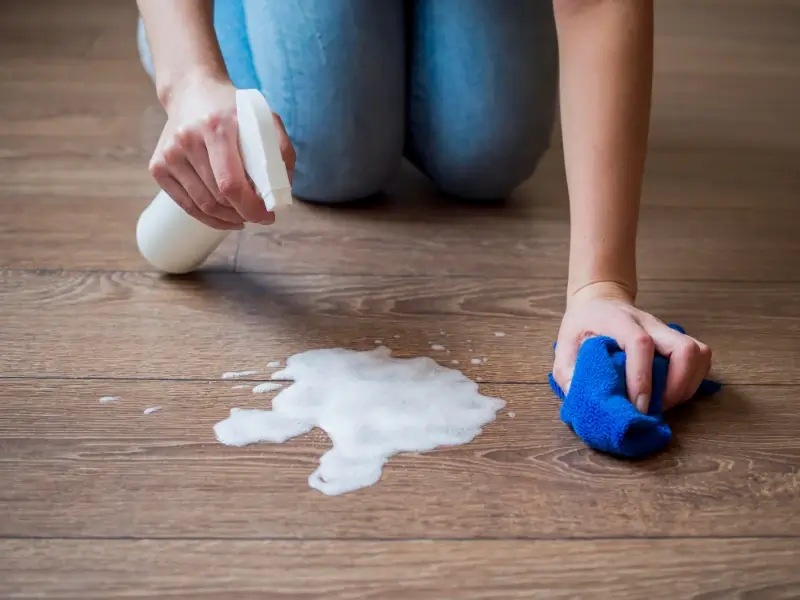How To Protect The Floors When Moving

Protecting the floors when moving is a crucial step that many overlook during the hustle and bustle of relocation. Whether you have hardwood, tile, carpet, or laminate, your flooring is vulnerable to scratches, dents, and scuffs during a move. Heavy furniture, high foot traffic, and accidental spills can quickly turn a stressful day into an expensive repair project. With the right precautions, tools, and planning, you can protect your floors and ensure your moving day goes smoothly.
Table of contents
Why Protecting Floors During a Move is Essential
When moving, your floors face significant risks. Here are some reasons why protecting them is crucial:
-
Avoid Damage: Heavy furniture and appliances can scratch, dent, or even crack your floors.
-
Preserve Home Value: Damaged floors can decrease the value of your home, whether you’re leaving or settling into a new place.
-
Reduce Repair Costs: Repairs for scratched hardwood or torn carpets can be costly and time-consuming.
-
Ensure Safety: Slippery surfaces or tripping hazards from damaged floors can pose safety risks to movers and residents alike.
Common Risks to Floors When Moving
-
Scratches and Scuffs: Dragging heavy furniture or appliances can leave permanent marks.
-
Dents: Dropping items or concentrated weight on furniture legs can dent floors.
-
Stains: Dirt, mud, or spills can leave lasting stains, especially on carpets.
-
Cracks: Tiles and delicate flooring are at risk of cracking under heavy weight or impact.

Essential Steps to Protect Floors During a Move
1. Plan Ahead for a Smooth Move
-
Take inventory of large furniture and appliances.
-
Measure doorways, hallways, and staircases to map out the best path for moving items.
-
Decide furniture placement in the new home to minimize unnecessary movement on your floors.
2. Clean and Prepare Your Floors
-
Remove dust and debris by sweeping or vacuuming.
-
Mop hard floors and let them dry to ensure a clean surface for applying protective coverings.
3. Use Professional Floor Protection Materials
-
Floor Runners: Perfect for creating pathways in high-traffic areas.
-
Red Rosin Paper and Cardboard: Ideal for hardwood, carpet, and vinyl to prevent scratches.
-
Floor Protection Film: Adhesive and durable, this is excellent for carpets and hard floors.
-
Plywood Sheets: Heavy-duty protection for delicate floors or areas with heavy furniture.
-
Drop Cloths: Quick and easy to use, though they must be secured to prevent slipping.
4. Protect Furniture Legs and Edges
-
Use felt pads, foam, or rubber caps on furniture legs.
-
Wrap sharp edges with bubble wrap or blankets to prevent scratching floors.
5. Invest in the Right Moving Equipment
-
Furniture Sliders: Minimize friction and prevent scratches when moving heavy items.
-
Dollies with Rubber Wheels: Ideal for moving large furniture without damaging floors.
-
Ramps: Useful for reducing pressure on delicate flooring while moving heavy loads.
6. Create Clear and Safe Pathways
-
Use thick cardboard or floor runners to create safe routes for movers.
-
Remove obstructions like rugs, cords, or clutter to prevent accidents.
7. Manage Foot Traffic
-
Provide disposable shoe booties for movers to reduce dirt and scuffs.
-
Place mats at all entry points to clean shoes before entering.
-
Limit access to certain areas to keep traffic concentrated.
8. Address Spills Immediately
-
Wipe up spills promptly to prevent stains or water damage.
-
Use manufacturer-recommended cleaning products for specific flooring types.
How To Protect Different Flooring Types When Moving?
Hardwood Floors
-
Lay protective film, rosin paper, or runners over the surface.
-
Avoid dragging furniture and use soft sliders or felt pads.
Carpets
-
Apply adhesive carpet film for protection against dirt and stains.
-
Use furniture sliders to prevent snagging or tearing when moving heavy items.
Tile Floors
-
Cover with plywood sheets for added protection against cracks.
-
Ensure movers use soft wheels or sliders to reduce impact.
Vinyl and Laminate Floors
-
Use felt pads or sliders to prevent scratches.
-
Avoid excess moisture during cleaning or spill cleanup to prevent warping.
Hiring Professional Movers
Hiring a professional Wandsworth removal company can bring expertise and specialized materials to protect your floors. They often use floor runners, protective films, and other tools to safeguard your home during the move. With their experience, you can ensure heavy furniture and appliances are moved safely and efficiently, saving you time and stress.
Wrapping Up
Protecting your floors during a move is an essential part of the relocation process. By planning ahead, using the right tools, and taking preventative measures, you can avoid damage and maintain the value of your home. Whether you’re moving on your own or hiring professional movers, these tips will help ensure a smooth and stress-free experience.
